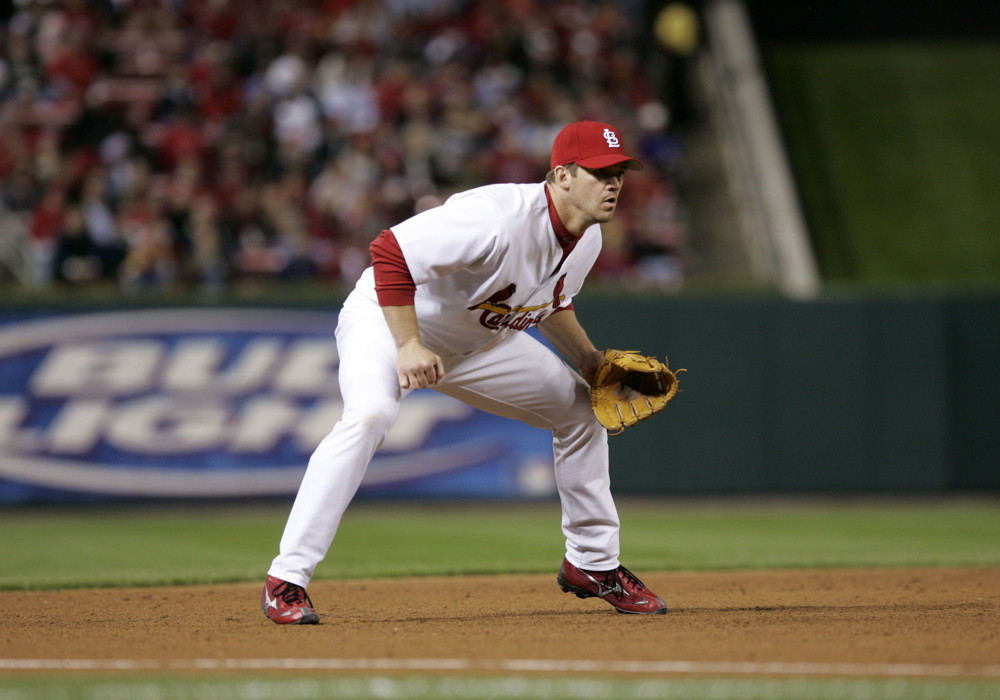By Alex Vigderman
It’s a big day for us at Sports Info Solutions. As of today, we have a new-and-improved version of our flagship statistic, Defensive Runs Saved, available to the public via FieldingBible.com.
Previously, infielder DRS (specifically the Range and Positioning portion of DRS) used just the information about the ball in play to determine its likelihood of being turned into an out. That meant that we didn’t have the granularity to tell whether a play was made because the fielder went above and beyond or he was just positioned well.
In essence, the calculation of Range and Positioning Runs Saved boils down to this single question: how well did the fielder do in completing the play given how often similar batted balls are turned into outs?
A few years ago SIS started tracking infielder starting positions on balls in play, which we’ve collected back to 2013. That allows us to evaluate each infield play (groundball or short line drive) at multiple points in time, so instead of just answering the one question above, we can now answer three questions about a play:
- Positioning: How much does the expected out rate change once we know how each fielder was positioned?
- Range: How much does the expected out rate change between when the ball was hit and when the fielder gets to the ball (or fails to), given that we know where everyone started?
- Throwing: How well did the fielder do in completing the play given where he fielded the ball, how hard the ball was hit, and the speed of the runner?
Bundle those components with the evaluation of infield air balls and you get the PART System, which serves as the replacement for the Range and Positioning System for infielders.
We’re really excited to bring all of this work out into the open. After all, we’ve been collecting the required data for several years! We are releasing it via FieldingBible.com for now, and will work to get the numbers updated on other websites over the offseason.
For now, here’s a rundown of how we rated infielders previously and how we rate them now. Remember when you’re looking at these changes, there are two big things the new system accounts for that DRS as you know it didn’t handle so well.
- We can now split up infielder performance in terms of Positioning, Air balls, Range, and Throwing. Because positioning tends to be a team decision, that positioning value is actually getting removed from a player’s total. Therefore, a player’s total in this new component of DRS really is his ART Runs Saved.
- Because it was difficult to evaluate players on shift plays before, we removed them from DRS. Now that we can measure performance independent of positioning, we can add those plays back in, giving a much more complete picture of a player’s value.
Without further ado, here are the updated leaders at each infield position in 2019. We’re excluding pitchers and catchers here because any impact that would come from the two changes above would negligibly affect those positions.
First Base Defensive Runs Saved Leaders, 2019

We don’t get a very different picture of the top players at first base as a result of these changes, but we do get a little bit of a picture of different players’ usage and competencies. Matt Olson and Christian Walker separate from each other partially because of the quality of their positioning, with Olson getting some negative positioning removed and Walker losing the benefit of strong positioning (more on the DBacks’ positioning in a bit).
Another important but subtle thing to note here is that “Throwing” is a bit of a misnomer, especially for first basemen. Technically it’s a measure of how well you turn balls in play into outs once you’ve fielded them. For first basemen, that often involves running to tag first base or flipping to the pitcher as opposed to what we usually think of as throwing. Joey Votto was quite good in this respect in 2019, while Walker was not.
Second Base Defensive Runs Saved Leaders, 2019

At second base, the inclusion of shift plays was the biggest factor in who came out on top, as both Kolten Wong and Kiké Hernandez combined strong performance with excellent positioning. This is no surprise given that the Cardinals and Dodgers each netted 30 or more Shift Runs Saved in 2019.
Falling off the leaderboard was Yolmer Sanchez. His 17 Positioning Runs Saved buoyed his total in the previous system, but the new system rates him as slightly below average in 2019.
Third Base Defensive Runs Saved Leaders, 2019

Andrew Kyne has already written about the changes to Matt Chapman’s numbers. He cements himself as the best defender relative to his peers, nearly doubling another mainstay at the hot corner, Nolan Arenado. You can see evidence that Chapman’s arm actually gives the A’s license to position him poorly, because he’s able to make up for it on the back end.
Shortstop Defensive Runs Saved Leaders, 2019

The numbers for Javier Baez and Nick Ahmed are really illuminating thanks to the new system’s breakdown. Baez leaps up by 10 runs from the previous system thanks to his excellent performance on shift plays, even with the Cubs ranking second-lowest in shift usage per BIS. His 11 Throwing Runs Saved tied Matt Chapman for the most among infielders, a fact we would not have been able to uncover with the previous system.
Ahmed benefited from Arizona’s outstanding positioning, saving an additional 16 runs. That great positioning gave him quite the boost relative to his peers in the previous DRS system, so he drops back a bit in the overall rankings. He also didn’t perform as well while shifted, so adding those plays back in didn’t help him like it did Baez and shortstop leader Paul DeJong.
This data is now available for all Major League players on FieldingBible.com, and it will also be featured in The Fielding Bible – Volume V (coming in the spring of 2020) and in The Bill James Handbook 2020 (out now).


